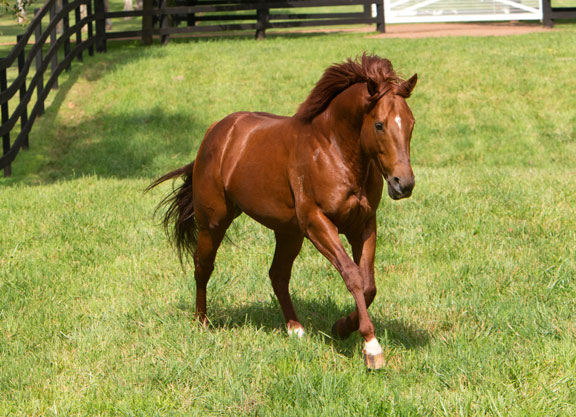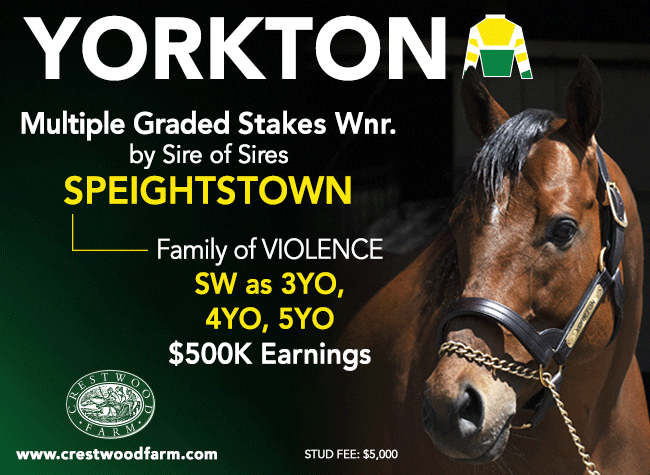By Kevin Blake
Things change quickly in the world of first-season sires. It is a fickle and unforgiving land in which a sire can go from being the cock of the walk thanks to the appeal of his progeny at the yearling sales to quickly turning into a feather duster just a few months after his first representatives hit the track.
With no fewer than 19 sires based in Great Britain and Ireland having had 50 or more live foals in their first crops in 2014, this year has been a busy one for first-season sires. As always, what the first runners for those sires have achieved thus far have been interpreted in different ways by different observers. Such is the nature of the game, most of those observers–be they breeders or stallion masters–will have a self-interest in how the market perceives the progeny of the new sires to have performed, thus there has been no shortage of bold claims made, some justified, others not so much. With this in mind, now is the perfect time to take a cold, hard look at what they have all achieved.
With Frankel's progeny having been dealt with in this space a month ago, this edition will analyse the progeny of the other 18 British/Irish-based first-season sires that had 50 or more live foals in 2014.
The live foal figures have been sourced directly from Weatherbys, but will not always been fully accurate due to occasional late registrations or other issues. As was the case with the analysis of Frankel's performance, they have been assessed using the measure of Racing Post Ratings. All of the statistics relate to runners in Europe and are accurate up to Dec. 3. Frankel's statistics (now updated to Dec. 3) are listed at the rear of the table for information only and have not been included in calculating the averages.
The sire that arguably comes out best across all the most relevant criteria is Sepoy (Aus) (Darley). His yearlings were particularly well received by the markets in both Australia and Europe last year, but his first runners were disappointing in the main in Australia, which seemed to instil a negativity in how the performance of his runners in Europe were perceived before they even made the track there. However, his end-of-season statistics show that he had an excellent first campaign with his European runners. To sire such high percentages of RPR85+ (22.4%) and RPR100+ (8.2%) performers is very eye-catching indeed and with many of his more highly-rated runners having been lightly raced, hopes will be high that they can progress as 3-year-olds. All things considered, that Darley left Sepoy's nomination fee unchanged at £15,000 is fair and he represents value at that for those that wish to take what is always a somewhat risky option of using a sire in their fifth season.
Another one that comes out well on this analysis is Power (GB) (Coolmore). While he would perhaps have been expected to have a high percentage of 2-year-old runners, it will come as a surprise to many that just 42.3% of his foals made the track as juveniles, suggesting that they aren't quite as precocious as might have been anticipated. Of those that ran, they achieved excellent RPR85+ and RPR100+ percentages that put him forward as one of the best-performing first-season sires of 2016. Power's overall profile and the evidence of his first crop thus far suggest that his progeny should train on well from two to three. With Coolmore having left his nomination fee unchanged at €8,000, he represents value.
On the subject of fifth-season gambles, two of the first-season sires that were considered some of the more likely ones for their progeny to improve from two to three were Casamento (Ire) (Darley) and Bated Breath (GB) (Juddmonte). With this in mind, what their first 2-year-old runners achieved considering just 47% or so of their foals made it to the track as 2-year-olds will be enough to encourage those that have supported them in the last couple of seasons that they have good futures ahead of them as sires. Casamento will again stand at Dalham Hall Stud for an unchanged fee of £5,000, while Bated Breath has had his fee reduced from £10,000 to £8,000. Their first 3-year-old runners will be eagerly anticipated in 2017.
The fastest starter of 2016 was unquestionably Helmet (Aus) (Darley) and, having finished the season with the third-highest percentage of runners-to-foals, he registered solid returns in all of the main criteria. Most notably, he was the only first-season sire to produce a Group 1 winner in 2016, with Thunder Snow (Ire) running out the impressive winner of the Criterium International at Saint-Cloud. His fee has been raised from £8,000 to £10,000 for 2017.
The leading first-season sire of 2016 in terms of number of individual winners was Sir Prancealot (Ire) (Tally-Ho) and the performance of his progeny warrants comment. The son of Tamayuz (GB) was widely expected to produce precocious 2-year-olds and the fact that he had the highest percentage of runners-to-foals at 70.8% shows that this very much proved to be the case. His winners-to-runners percentage of 42.7% is well above average and represents a very solid start for him. However, that he sired below-average percentages of RPR85+ and RPR100+ performers is a slight concern and with his runners having proven so precocious as a group, many will be focusing on how well his progeny progress from two to three next season before making a fuller assessment of his merits. His nomination fee has been raised from €5,000 to €8,000 for 2017.
Another sire that had a high percentage of runners-to-foals, but backed it up with high percentages of RPR85+ and RPR100+, was Mayson (GB) (Cheveley Park). 65.6% of his foals made it to the track and 17 of them won, but more importantly his 22.9% rate of RPR85+ performers was the best of the bunch and his 4.2% rate of RPR100+ performers reads well too. Cheveley Park have understandably increased his nomination fee from £5,000 to £6,000 for 2017 and while there are obvious risks in using him before seeing how his progeny progress as 3-year-olds, his runners performed well enough as juveniles to tempt breeders to take that chance at the price.
Last but not least, a first-season sire that performed well in all regards was Dragon Pulse (Ire) (Irish National Stud). Just over half his first foals made it to the track during the season and they registered winners-to-runners, RPR85+ and RPR100+ percentages that were well above average. His nomination fee has been raised from €5,000 to €8,000 for 2017.
Not a subscriber? Click here to sign up for the daily PDF or alerts.







